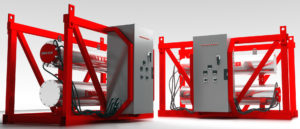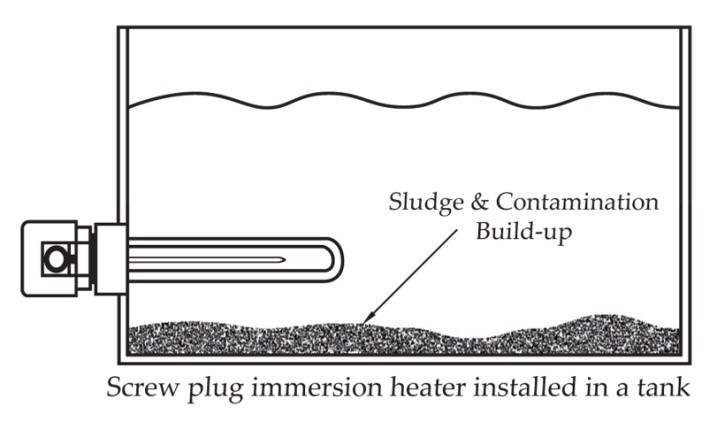Immersion Heater Maintenance: How To Maximize Lifespan & Efficiency
Last updated on September 26th, 2022 at 02:06 pm
 Proper maintenance of your immersion heater will drastically improve performance, efficiency, and increase lifespan. Being proactive about heater care saves money, and increases safety. This guide covers proper immersion heater maintenance for maximizing lifespan and efficiency. We will discuss pre-installation, installation, and ongoing care.
Proper maintenance of your immersion heater will drastically improve performance, efficiency, and increase lifespan. Being proactive about heater care saves money, and increases safety. This guide covers proper immersion heater maintenance for maximizing lifespan and efficiency. We will discuss pre-installation, installation, and ongoing care.
Pre-Installation
Heater Selection
Long term care starts with picking the right immersion heater. Ensuring that it is constructed of the right material for a specific applications and medium is one of the most important aspects in immersion heater lifespan and efficiency. The materials used for your immersion heater needs to be able to stand up to its use conditions. Incoloy or stainless steel, for example, may be used when heating corrosive mediums because they are more resistant to corrosion.
The Megohm Reading
The Megohm Reading is used to gather a resistance reading before the heater is connected to a power source. This reading will help to identify if the heater has been exposed to moisture in transportation or storage. Moisture may cause problems post-installation or cause damage to the heater over time. Moisture can be removed by baking the heater in an oven or by energizing the heaters at a low voltage.
Checking Seals & Connections
Before installing the immersion heater, the seals and connections should be checked. This check is to ensure the connections are tight and that there are no leaks. The gasket between the heater and the tank should be drip proof. Tight connections and functional seals will prevent energy loss and damage to the heater.
Wiring
Proper wiring will help prevent damage to the immersion heater as well as ensuring it is operating safely and efficiently. Check to ensure you have the right wire temperature rating. The rating often requires 200゜ degrees C or higher. The wires must be capable of meeting the rating requirements to effectively supply the heater. In this same vein, it is important to make sure the mains supply corresponds with the voltage on the heater and the correct supply cable sizes for the electrical load being used.
Temperature Control Mechanisms
Ensure temperature control mechanisms are in place to prevent overheating – this will protect both the liquid and the heater. The wiring for the thermostat and safety cutout is especially important. First and foremost, this is a safety concern. The heater must be able to cut out if the thermostat detects that the temperature is out of the optimal range.
Installation
Mounting Location
When mounting your immersion heater, location is very important for longevity, efficiency, and for access to perform ongoing maintenance. The heater should be placed where it has enough clearance to be easily removed. This will make it easy for ongoing maintenance in the future when the heater needs to be removed for cleaning. The location of the heater should be where it is safest from shock, vibration, dust, corrosion, or explosion. If the unit has been specifically made to withstand these elements, then it has more options for location. However, the heater should not be placed where sludge, sediments, or deposits will settle on it. When sediment settles on the immersion heater in can act as an insulator, reducing efficiency and reducing the heater’s lifespan. 
Immersion
Ensure the active part of the element is submerged. Put switches in place to shut off the heater if the fluid level drops too low. If the fluid drops too low without the immersion heater shutting off it can result in damage to the heater which will reduce its lifespan and operating efficiency.
Ongoing Maintenance
Routine checkups should be performed, even when your immersion heater is functioning properly. It is more effective and inexpensive to be proactive with the care of your heater than to wait for symptoms to occur.
Turn off the power
Before removing your immersion heater you must ensure it is turned off. If the heater is left on it can create a safety hazard for those performing the maintenance. As well, removing the heater while it is still on risks causing damage to the heater.
Regular checks and cleaning
Perform regular checks of the coatings to check for corrosion. If corrosion is found the terminal enclosure gasket should be checked. If any sign of corrosion is found here, the gasket should be replaced. A leak here could cause significant damage to the entire system. Check connections for tightness. If there is a loose connection resistance heat can be created inside the system. This resistance heat can cause the heater terminal to melt. Although you installed the immersion heater where it was less likely for sediment to gather, periodic checks should still be performed. If there is sediment, it should be removed to prevent damage. If sediment is building up quickly or frequently, consider finding a new location for the heater. Cleaning can generally be performed with something as simple as a damp cloth. For tougher sediment, a power washer can be used on a low power setting. The fluid level should be regularly checked to ensure the heating elements are submerged. Testing the fluid level sensors and safety shutoff is a proactive way to prevent damage to the equipment and medium.
Support & Selection
Picking the right immersion heater for maximum efficiency and lifespan is an important process and can be a difficult choice to make. Contact our expert staff today for recommendations and support.
